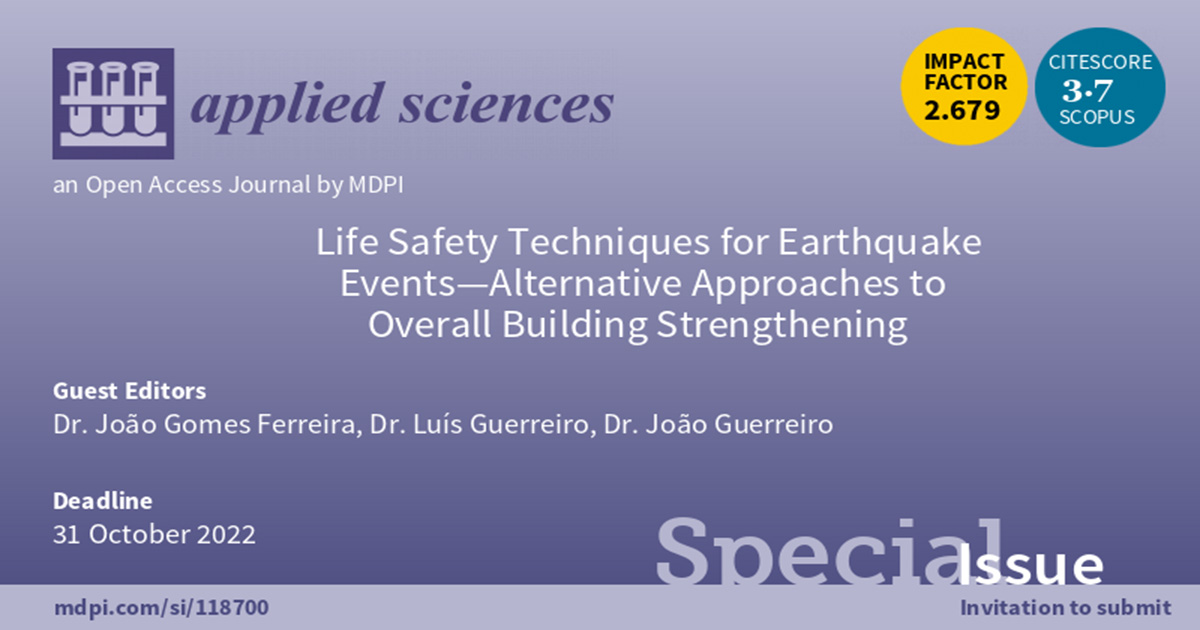Life Safety Techniques for Earthquake Events—Alternative Approaches to Overall Building Strengthening
A special issue of Applied Sciences (ISSN 2076-3417). This special issue belongs to the section "Civil Engineering".
Deadline for manuscript submissions: closed (31 October 2022) | Viewed by 1874

Special Issue Editors
Interests: building rehabilitation; seismic strengthening; structural testing; building surveying; masonry walls
Special Issues, Collections and Topics in MDPI journals
Interests: seismic protection; base isolation; structural analysis for seismic safety
Interests: seismic rehabilitation; structural testing; numerical modeling
Special Issue Information
Dear Colleagues,
In most countries with relevant seismicity, a significant part of the building stock does not comply with modern design codes, namely in respect of earthquake strength.
The ideal approach to this structural safety problem would consist of strengthening all vulnerable buildings with a heritage or architectonical interest or even demolishing them and building new ones if none of these values are recognized. However, these approaches are very intrusive and expensive and may not be implemented in due time.
In this context, low-intrusive and low-cost life-safety techniques have been designed and developed to allow protecting buildings’ occupants without requiring buildings to undergo overall structural strengthening.
The main purpose of this Special Issue is to attract world-leading researchers in the area of “Life Safety Techniques for Earthquake Events—Alternative Approaches to Overall Building Strengthening” and to spread their latest developments.
Dr. João Gomes Ferreira
Dr. Luís Guerreiro
Dr. João Guerreiro
Guest Editors
Manuscript Submission Information
Manuscripts should be submitted online at www.mdpi.com by registering and logging in to this website. Once you are registered, click here to go to the submission form. Manuscripts can be submitted until the deadline. All submissions that pass pre-check are peer-reviewed. Accepted papers will be published continuously in the journal (as soon as accepted) and will be listed together on the special issue website. Research articles, review articles as well as short communications are invited. For planned papers, a title and short abstract (about 100 words) can be sent to the Editorial Office for announcement on this website.
Submitted manuscripts should not have been published previously, nor be under consideration for publication elsewhere (except conference proceedings papers). All manuscripts are thoroughly refereed through a single-blind peer-review process. A guide for authors and other relevant information for submission of manuscripts is available on the Instructions for Authors page. Applied Sciences is an international peer-reviewed open access semimonthly journal published by MDPI.
Please visit the Instructions for Authors page before submitting a manuscript. The Article Processing Charge (APC) for publication in this open access journal is 2400 CHF (Swiss Francs). Submitted papers should be well formatted and use good English. Authors may use MDPI's English editing service prior to publication or during author revisions.
Keywords
- earthquakes
- life safety
- life protection
- buildings
- collapse






